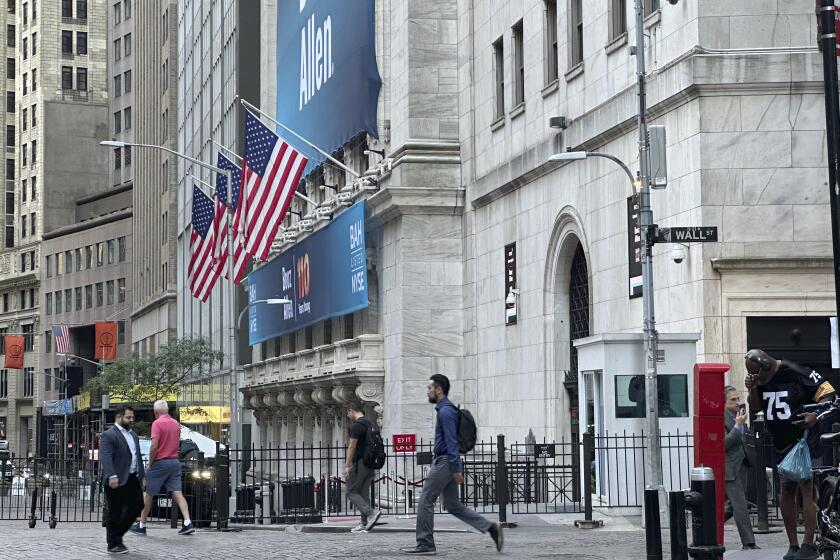Building on Complete Turnaround : Hot Sales Keep Western Digital Fired up
- Share via
It’s already blasted its way up from the bottom this year.
And, based on the company’s strong sales, Western Digital Corp. stock is likely to go even higher during the months ahead, Wall Street analysts say.
Once just another victim of the high-technology shakeout, Western Digital rebounded sharply during 1986. As previously reported, the company had net earnings of $21.4 million during the year ending June 30, contrasted with a $4.6-million loss a year earlier. That translates into a fiscal 1986 profit of $1.08 a share contrasted with a loss of 26 cents a share a year ago.
And as the earnings have improved, so has Western Digital’s market value. Since the beginning of 1986, the price of the Irvine-based company’s shares has increased more than 77% to its Friday close of $18.625 on the American Exchange. The high for the last 12 months is $20 a share, while the low for the last year was $9.75.
Much of the improvement can be attributed to stronger year-to-year sales. The company’s $279.4 million in revenues for its fiscal 1986 represented a 58% increase from $177.2 million a year earlier.
Earnings Estimates Grow
And the analysts have increased their fiscal 1987 earnings estimates, saying that Western Digital should be able to show a sales increase of between 33% and 40% during the current fiscal year.
“It’s hard to believe,” said Daniel Klesken, of Montgomery Securities Inc. “You have to question when it’s going to end.”
Klesken, who said he expects Western Digital’s 1987 revenues to top $397 million, raised his earnings estimate by 5 cents to $1.65 a share. Based on Western Digital’s 19.4 million shares outstanding, that translates into $32 million in net earnings.
First Boston Corp.’s Jack Geraghty also increased his estimate of Western Digital’s fiscal 1987 earnings to $1.90 a share, or $36.9 million. Geraghty said he believes that the company will have at least $372 million in sales this year.
Robert Sullivan of Paine Webber also expects a healthy sales increase during Western Digital’s fiscal 1987. Revenues this year, Sullivan said, should range from $380 million to $390 million. He estimates that the company will earn $1.70 a share for the year, or about $33 million.
Burt Moyer, Western Digital’s chief financial officer, said in an interview with The Times last week that the company is comfortable with Wall Street’s fiscal 1987 earnings and revenue estimates.
Western Digital--which sells electronic circuitry both to IBM and to the companies that manufacture IBM-compatible personal computers--actually is sold out of several products, including memory boards for IBM computers, Montgomery’s Klesken said.
Persistent Demand Seen
The IBM memory board line is about 4 years old, but it could be another 12 to 18 months before demand for the products slackens, Klesken said. Even then, “you probably won’t see the old product go away completely” because large numbers of used computers will still need memory boards, Klesken said.
Other product lines, including controllers for personal computers and computer printers--some of which are made by Western Digital’s recently acquired Paradise Systems Inc. subsidiary--will keep Western Digital going when board sales finally peter out, the analysts agree.
Western Digital is probably not going to be able to post such strong year-to-year sales increases indefinitely, but neither should the company experience a precipitous sales drop, said First Boston’s Geraghty, who is recommending Western Digital stock as a “bargain.”
Geraghty, who has been bullish on the stock since late 1985--when it was trading in the mid-$7-a-share range--said that, based on his 1987 estimate of $1.90 a share in earnings, Western Digital is currently trading fairly cheaply at 10 times its earnings.
Although the company’s stock price already has increased sharply this year, both Klesken, of Montgomery, and Sullivan, of Paine Webber, said it is likely to go higher during calendar 1987 and beyond.
“I certainly wouldn’t be surprised to see it in the upper 20s, six to 12 months out,” Sullivan said.



